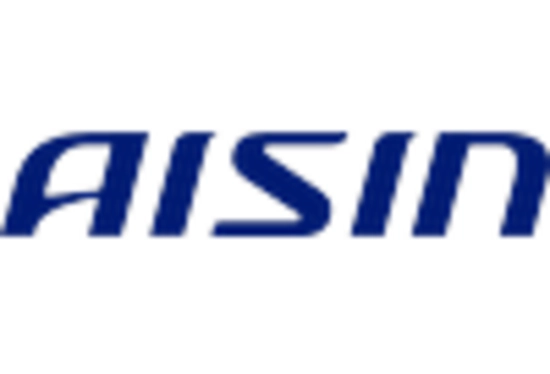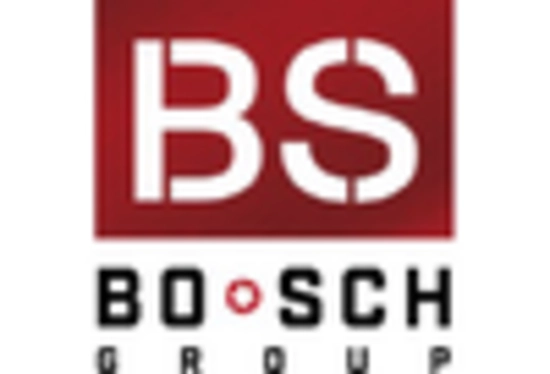Shift Towards Electric and Hybrid Vehicles
The Automotive Selector Lever Market is poised for transformation due to the increasing shift towards electric and hybrid vehicles. As these vehicles gain popularity, the design and functionality of selector levers are evolving to accommodate new powertrains. Electric vehicles often utilize electronic shifters, which differ significantly from traditional mechanical systems. This transition is expected to create new opportunities for manufacturers specializing in selector levers. Market data suggests that the electric vehicle segment is anticipated to account for a substantial share of the automotive market by 2030. This shift not only influences the design of selector levers but also necessitates advancements in technology, thereby propelling the Automotive Selector Lever Market forward.
Growing Consumer Preference for Customization
The Automotive Selector Lever Market is witnessing a growing consumer preference for vehicle customization. As consumers increasingly seek personalized experiences, automakers are responding by offering a variety of selector lever designs and functionalities. This trend is particularly evident in luxury and high-end vehicles, where unique selector lever designs can enhance the overall aesthetic appeal. Market Research Future indicates that the customization trend is expected to drive significant growth in the automotive sector, with consumers willing to pay a premium for personalized features. Consequently, the Automotive Selector Lever Market is likely to see an uptick in demand for innovative and customizable selector lever solutions that cater to diverse consumer preferences.
Rising Demand for Advanced Driver Assistance Systems
The Automotive Selector Lever Market is experiencing a notable surge in demand for advanced driver assistance systems (ADAS). As safety regulations become more stringent, manufacturers are increasingly integrating selector levers with ADAS features. This integration enhances vehicle safety and improves user experience, thereby driving market growth. According to recent data, the ADAS market is projected to grow at a compound annual growth rate of over 20% in the coming years. This trend indicates a strong correlation between the adoption of ADAS and the evolution of selector lever technologies. Consequently, the Automotive Selector Lever Market is likely to benefit from this shift, as automakers seek to incorporate innovative features that align with consumer expectations for safety and convenience.
Technological Advancements in Manufacturing Processes
The Automotive Selector Lever Market is benefiting from technological advancements in manufacturing processes. Innovations such as 3D printing and automation are streamlining production, reducing costs, and improving product quality. These advancements enable manufacturers to produce more complex and lightweight selector lever designs, which are increasingly favored in modern vehicles. Data indicates that the adoption of advanced manufacturing technologies is expected to enhance operational efficiency and reduce lead times in the automotive sector. As a result, the Automotive Selector Lever Market is likely to experience growth driven by these efficiencies, allowing manufacturers to respond more swiftly to market demands and consumer preferences.
Increasing Focus on Sustainability and Eco-Friendly Materials
The Automotive Selector Lever Market is increasingly focusing on sustainability and the use of eco-friendly materials. As environmental concerns rise, manufacturers are exploring alternatives to traditional materials, opting for sustainable options that reduce the carbon footprint of vehicles. This shift is particularly relevant in the context of regulatory pressures and consumer demand for greener products. Market analysis suggests that the use of recycled and biodegradable materials in automotive components is on the rise, with a projected increase in market share over the next decade. Consequently, the Automotive Selector Lever Market is likely to adapt to these trends, fostering innovation in material science and design to meet the evolving expectations of environmentally conscious consumers.


















Leave a Comment